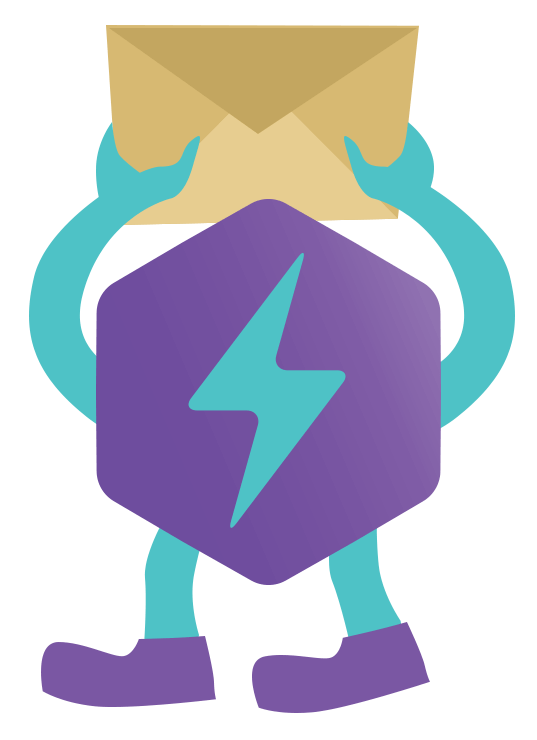Non-fungible tokens (NFTs) have exploded in popularity in the recent years, with billions of dollars in NFT art, collectibles and assets sold. But the technology enabling this NFT boom can often get overlooked – blockchains. The very thing you need to mint NFTs on, that’s right, the ledger.
With different networks like Ethereum, Solana and Polygon offering varied capabilities, not all blockchains serve NFT projects equally. You must select optimally based on factors like transaction fees, scalability, security and developer resources.
This guide explores the key criteria for the best NFT blockchains and evaluates top contenders on those metrics. Read on to make the optimal choice when buying or building your crypto collectibles, NFT game or digital artwork marketplace.
TL;DR
- Blockchains like Ethereum digitally verify NFT transactions and ownership
- Choosing suitability depends on fees, scalability, security and features
- Ethereum is the most proven but faces congestion
- Bitcoin has expanded to include NFTs called ordinals
- Solana and Polygon offer faster/cheaper transactions than Ethereum
- No universal “best”; evaluate tradeoffs and match to your NFT requirements
Demystifying the Technology Behind NFTs
Before evaluating NFT blockchains, let’s briefly explain what blockchain technology is and its role in NFTs. A blockchain is an immutable decentralized digital ledger that permanently records transactions in a secure, transparent way without central authorities.
Networks like Ethereum and Solana operate via nodes distributed globally that maintain copies of the ledger. Changes propagate across nodes through cryptography and consensus mechanisms that verify alterations. This decentralization ensures no single entity controls the network.
NFTs build atop blockchains in that every NFT token minting or transaction gets recorded immutably on the ledger. This chronicling enables non-fungiblity by guaranteeing unique digital ownership and scarcity for assets like artwork or collectibles.
But all blockchains have tradeoffs in transaction fees, speeds and capabilities. Choosing wisely matters greatly in delivering the optimal user experience for your NFT marketplace, game or community.
Related: Why Blockchain Is The New Norm In Gaming
Key Factors for the Best NFT Blockchain
Many criteria influence blockchain effectiveness for NFTs. Let’s explore the main ones:
Security and Decentralization
Blockchains only bring advantages if the network itself is secure against attacks or manipulation. Hacking could allow theft and the creation of counterfeit NFTs. Relatedly, decentralization via sufficient globally distributed nodes prevents centralized control over transactions. Both factors protect NFT scarcity and ownership validity.
Speed and Scalability
NFT mints and sales should finalize rapidly without delays frustrating users. Slow speeds create bottlenecks especially during launches or price spikes. Scalability via high throughput likewise minimizes congestion for growing ecosystems. Supporting demand spikes prevents failed transactions which can deter adoption.
Related: Minting at the Speed of Thought with NFTpay
Interoperability and Connectivity
Can users easily access NFTs from multiple environments like mobile wallets, games, metaverses? Chains allowing cross-platform transfers and interactions expand possibilities.
Cost-Effectiveness
Blockchains with astronomical gas fees or volatility costs deter average users, creators and developers alike. Stable, reasonable expenses encourage participation and innovation.
Functionality
Unique technical capabilities influence development possibilities. Does the chain support diverse NFT standards, meta-transactions, sophisticated smart contracts, staking opportunities?
Ease of Use
Consumers want plug-and-play access for buying, selling and using NFTs without handling crypto directly themselves. The onboarding experience must be intuitive.
With those criteria explained, let’s evaluate the most utilized blockchains for NFT projects today.
Related: NFTpay Set to Revolutionize Web3: Fast, Easy, Free!

Ethereum – The Incumbent Giant
As the second-ever blockchain created after Bitcoin, Ethereum dominates the NFT ecosystem currently. The vast majority of existing NFT projects across art, gaming, sports and metaverses got built on Ethereum.
Pervasive advantages like its first-mover status and network effects drive its leadership position. Collectively, the Ethereum community has unmatched experience across all aspects of blockchain networks from core protocol development to decentralized applications.
This fosters an unparalleled richness of tooling, documentation and support resources for NFT creators and developers. Standing on the shoulders of these Ethereum giants lets projects focus more on innovation versus building foundational components.
Challenges do lurk however – primarily severe congestion and gas fee spikes that frustrate users. The crux lies in scalability.
This limitation catalyzed the recent surge in alternate blockchains touting faster throughput like Solana, which we will evaluate shortly. Fortunately Ethereum itself continues evolving ambitiously to meet demand.
Changes already underway like sharding and Proof-of-Stake aim to massively scale speed and transaction capacity. Layer 2 solutions that handle transactions off-chain before settling on Ethereum also expand possibilities greatly while benefiting from Ethereum’s security.
Ethereum still faces a winding route on its technical scaling roadmap however. This gives opportunistic rivals time to capture market share. Yet reports of Ethereum’s demise seem greatly exaggerated given its commanding development community and first-mover advantage.

Bitcoin – Unlikely Contender Gaining Traction
The OG blockchain itself may seem an unlikely NFT platform given Bitcoin’s pure focus on payments. But 2023 showcased surprising momentum for Bitcoin NFT capabilities through Ordinals.
Bitcoin benefits enormously from unmatched industry security given its longevity and mining infrastructure. This makes it ideal for high-value NFT use cases demanding proven reliability like financial instruments, contracts, certifications and precious collectibles.
Detractors remain skeptical however whether Bitcoin can ever support convenient NFT functionality natively without new layers and extensions. Ease-of-use lags purpose-built blockchains with custom NFT logic and tooling baked-in at the core protocol level.
Regardless of limitations, Bitcoin boasts brand prestige that could significantly expand the overall NFT consumer market as awareness spreads of its capabilities. This contributes a strategic brand halo that Ethereum itself originally benefited from by pioneering crypto art and gaming.

Solana – Blazing Speed Challenger
The blockchain making most headlines recently for disrupting Ethereum’s NFT leadership is Solana. Optimized for scale from inception, Solana already processes 50,000 transactions per second – over 250X greater than Ethereum presently.
This enormous throughput combined with rock-bottom fees measured in fractions of a penny immediately attracted NFT developers. Solana prioritizes rapid iterative community-driven development.
It introduced developer grants, hackathons, incubation programs and VC networking opportunities that kickstarted an explosion of projects creating NFT marketplaces, token standards and toolkits tailored specifically to digital collectibles.
Skeptics remain cautious however about potential decentralization issues with Solana’s reliance on only several hundred validation nodes presently. Concerns linger regarding overall network security, censorship-resistance and VC centralized control versus community-run blockchains.
Questions likewise persist around exaggerated transaction counts that don’t fully translate into real NFT use cases at scale beyond contrived test scenarios. Replicating Ethereum’s developer momentum also presents challenges despite impressive incentives.
Regardless, Solana’s NFT ecosystem made undeniably immense strides that cannot be ignored. Its cost and speed advantages stand to reshape user expectations of the NFT experience.

Polygon – Hybrid Scaling Approach
Polygon provides an intriguing alternative as a “layer 2” extension built directly atop Ethereum. Rather than a wholly independent blockchain, Polygon offloads transaction processing then periodically settles resulting ledger changes back to Ethereum.
This hybrid positioning allows retaining Ethereum’s security and decentralization while bypassing its speed and fee handicaps. Polygon achieves several thousand transactions per second for a tiny fraction of Ethereum gas costs.
The outcome? A high throughput “best of both worlds” network with Ethereum compatibility and standalone chain benefits. Users can leverage existing Ethereum NFT investments and tooling while accessing lower fees, quicker finality and flexible functionality.
Polygon offers developer support, and incentivizes migration through grants. Major platforms like Opensea, Dolce & Gabbana, Decentraland and Atari utilizes Polygon alongside Ethereum.
Future interoperability between the Ethereum mainnet and Polygon sidechains promises cross-ecosystem synergies. Scalability and rapid iteration speed meanwhile enable aggressive NFT innovation exceeding Ethereum presently.
Detractors point to potential security risks with Polygon’s role as a layer 2 scaling enhancer for Ethereum rather than fully independent validator architecture. Community enthusiasm also continues catching up with technical capabilities.
Regardless of limitations, Polygon deserves consideration for NFT projects wanting Ethereum’s benefits without its current drawbacks. Its throughput readily supports large-scale commercial NFT enterprise use combined with sophisticated functionality.
Assessing Your Blockchain Needs
In summary – no universally superior blockchain exists for every NFT purpose. Tradeoffs between technical features, scalability, fees and community support dictate case-specific assessments.
Ethereum offers unmatched maturity but wrestles with throughput and costs – for now. Bitcoin provides enable rich NFT functionality and is attracting new projects to it’s ecosystem. Solana and Polygon deliver blazing speed and affordability. Their sustainability remains proven out over prolonged periods however. Other contenders like Tezos and Cardano continue vying for share while new chains inevitably get introduced.
Ultimately identifying the optimal technology stack depends on aligning strengths to your NFT project vision. Revisit our key evaluation criteria – what matters most? Prioritize must-haves over nice-to-haves.
While momentum heavily favors Ethereum currently, expect fluid advancement across blockchain capabilities, interoperability and convergence over coming years. Maintaining technology flexibility allows embracing progress.
Just remember – your users care about their NFT experience, not underlying protocols. Pick the network delivering that delight best as blockchain infrastructure continually matures. Own the vision, and let the ideal technology follow.
Suggested for you: Unlocking the Full Potential of NFTs with NFTpay









